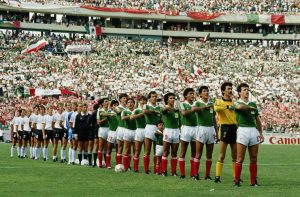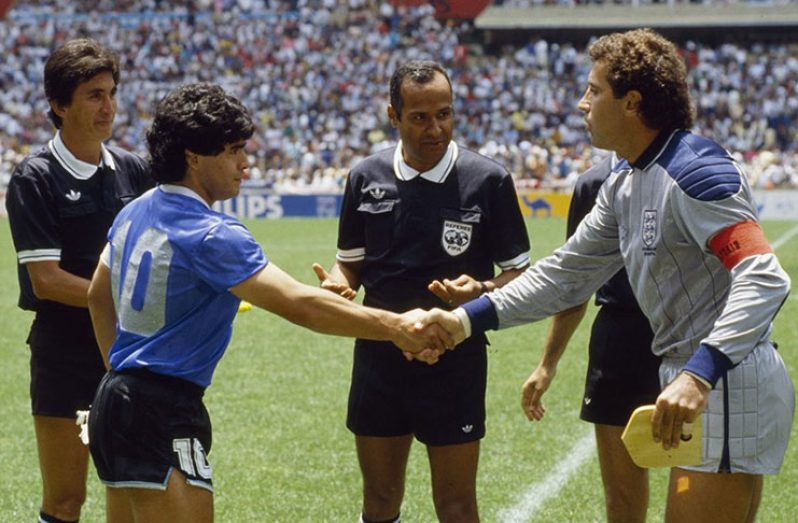How Colombia withdrew from hosting the 1986 World Cup
In 1986, Mexico became the first nation to be given the honour of hosting two World Cups. 16 years prior, Mexico had hosted an incredibly successful and fondly remembered World Cup tournament where the world witnessed what is often regarded as one of the best championship winning teams of all time–the 1970 Brazil national team.
The 1986 edition of the tournament was another rousing success, as the world watched in awe at the individual brilliance of Diego Maradona.
However, the event could have been completely different had the initial plans for the 1986 World Cup gone ahead.
For it was actually Colombia who were initially given the rights to host the World Cup, but withdrew in 1982, primarily due to financial issues.
The story of Colombia’s failure to host the World Cup is a tragic one which involves political corruption, guerrilla warfare, drug cartels and a former US Secretary of State.
To understand how Colombia’s bid to host the World Cup ended so disastrously, we must go all the way back to the year 1970, when Mexico first hosted the tournament and Colombia’s general election of that year.
Misael Pastrana Borrero was elected president on a campaign which promised to improve Colombia’s economy by investing heavily in grand-scale projects such as sports arenas. Part of this plan was to lobby for Colombia to host the World Cup, as the tournament had proved successful for other South American nations.
Borrero’s bid was successful and in 1974, FIFA president Sir Stanley Rous granted Colombia the right to host the 1986 World Cup. Plans were underway to prepare the country for the tournament. Stadiums began to be constructed, including the Estadio Metropolitano Roberto Meléndez–the current home of the Colombian national team.
But almost immediately, there began to be concerns about Colombia’s ability to host the tournament. Supporters of Gustavo Rojas Pinilla, Borrero’s opponent in the 1970 general election, claimed that the election was rigged. Militarised guerrilla movements such as M-19 and the Revolutionary Armed Forces of Colombia (FARC) grew throughout the decade amid continued political unrest.
Organised crime groups such as the notorious Medellín Cartel, headed by Pablo Escobar, grew in the 1970s and ’80s with the rise of drug trafficking to the United States. As all these groups vied for more political control, bloody violence ensued with many of the victims being civilians. Colombia’s economy was sent into turmoil.
By 1982, stadiums were incomplete, Colombia had no money to invest in its World Cup plans, and there were growing concerns about how safe it was for nations to travel to the country amid the ongoing violence.
Incumbent president, Belisario Betancur, made the executive decision: Colombia could not host the World Cup. In a televised speech in October 1982, the president explained that the nation lacked the necessary funds to fulfil World Cup hosting duties.
This left FIFA in uncharted waters. They needed to find a new host quickly and soon found four contenders in Brazil, Canada, USA, and Mexico. Brazil dropped out, leaving three bids for the hosting rights for FIFA to consider.
The Americans put in a strong case to host the tournament, with their bid being headed by US Secretary of State Henry Kissinger. A huge soccer fan, Kissinger also happened to be the chair of the North American Soccer League’s (NASL) board of governors. The NASL was on the decline by 1983 and the chance to host the World Cup was seen as the prefect opportunity to revive soccer in the United States.
The NASL’s biggest stars like Franz Beckerbauer and Pelé, who were both playing for the New York Cosmos at the time, were carted out to give their public support for an American World Cup.
The United States looked like the obvious choice to takeover hosting duties from Colombia, but some dodgy backroom dealings at FIFA would ensure that this was not the case.
FIFA’s vice president was Guillermo Cañedo–former president of Club América in Mexico City. Cañedo also happened to be the head of Televisa–a giant Mexican media conglomerate which would control the television rights for soccer and the World Cup in the region. Cañedo could inflate the price of selling the TV rights to other confederations, meaning FIFA had the opportunity to pocket a hefty sum of money.
When it came time to vote for a new host in May 1983, Mexico was unanimously elected as the new hosts of the 1986 World Cup–a first for the history of World Cup bidding. Mexico became the first nation to host two World Cups and Cañedo’s backroom dealings surely played a huge part.
The United States would have to wait until 1994 to host the tournament, but by that time the NASL had folded.
Colombia are still yet to host the World Cup, but are considering a bid for the 2026 tournament. That would mark 40 years since the nation lost the chance to host the World Cup.
However, with the centenary World Cup likely to take place in Uruguay and Brazil four years later, it is unclear whether FIFA would allow South American nations to host the World Cup twice in a row.
Unfortunately, Colombia may have to keep waiting to finally get their moment at the centre of world football.





.jpg)








